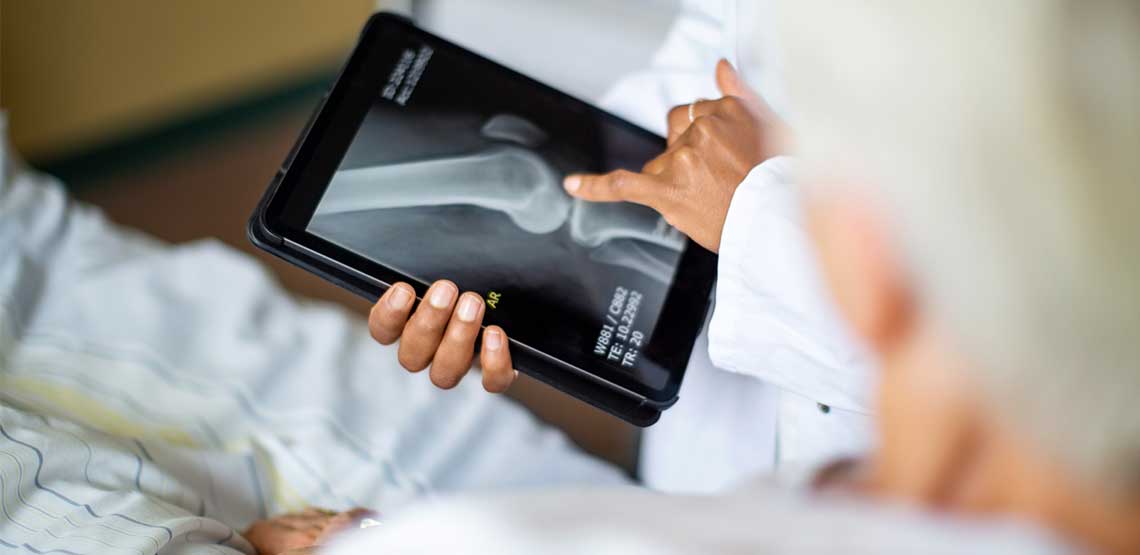Osteoarthritis vs Rheumatoid Arthritis: Understanding the Difference
Arthritis is a widespread condition that affects millions of people. But it is not one disease; there are different types of arthritis, including osteoarthritis and rheumatoid arthritis. Both conditions lead to inflammation of the joints and pain, but they are different diseases with different causes and treatments.
What Is Osteoarthritis?
Osteoarthritis is a joint disease that involves the breakdown of the cartilage in the joint. It develops over time due to wear and tear on the joint. Any joint may be involved, but the knees and hips are most commonly affected. According to the Centers for Disease Control and Prevention (CDC), in the United States, over 30 million people have osteoarthritis.
Anyone can develop osteoarthritis, but it tends to develop most frequently in older adults. According to the NIH Osteoarthritis and Related Bone Diseases National Resource Center, certain factors may increase a person’s risk of developing osteoarthritis, including the following:
- Having a thin frame
- Family history of osteoarthritis
- Being post-menopausal
- Smoking
- Sedentary lifestyle
- Excessive alcohol intake
- Low calcium intake
What Is Rheumatoid Arthritis?
Rheumatoid arthritis involves an autoimmune disease that affects the joints. For unknown reasons, the immune system overreacts and attacks the joints. It is less common that osteoarthrosis, but according to the American College of Rheumatology, it still affects about 1.3 million people in the United States.
It is not clear why some people develop rheumatoid arthritis, but certain risk factors have been identified, including:
- Obesity
- Smoking
- Family history
Similarities
Although they are different diseases, there are some similarities when you look at osteoarthritis vs rheumatoid arthritis, including the following:
Joint inflammation: both conditions cause inflammation in the joints.
Gender: both types of arthritis are more common in women. According to the CDC, osteoarthritis is more common in women, especially after the age of 50. The American College of Rheumatology reports that about 75% of people that develop rheumatoid arthritis are women.
Related Search Topics (Ads)
Differences
One of the main differences between osteoarthritis and rheumatoid arthritis is the cause. There are additional differences, including the following:
Symptom onset: osteoarthritis comes on gradually over time. Rheumatoid arthritis usually develops quickly, with symptoms becoming worse even in a few weeks.
Age: osteoarthritis tends to affect people later in life. While the risk of rheumatoid arthritis also increases with age, it frequently affects people at a younger age as well.
Systemic effects: since rheumatoid arthritis is an autoimmune disease, it tends to affect more than just the joints. Some people also develop additional symptoms, such as dry eyes or loss of energy.
Different joints: although the same joints can be affected by both osteoarthritis and rheumatoid arthritis, there can also be some differences. Rheumatoid arthritis often develops in the smaller joints in the body, such as the fingers. It is also a symmetrical disease, which means joints on both sides of the body are affected. Osteoarthritis often develops in larger joints, such as the knees. It is also common for it to occur on only one side of the body.
Symptoms
Some symptoms of osteoarthritis are similar to rheumatoid arthritis, while some are different.
Osteoarthritis Symptoms
- Joint pain
- Joint stiffness
- Decreased range of motion
- Only one joint may be affected
- Morning stiffness that lasts less than 30 minutes
Rheumatoid Arthritis Symptoms
- Joint pain
- Usually, multiple joints are affected
- Fever
- Fatigue
- Morning stiffness that lasts longer than 30 minutes
Symptoms of osteoarthritis may be more severe at times, but the condition does not go away. Although rheumatoid arthritis also does not completely go away, it can go into remission. Symptoms may disappear for weeks or months and return.
Osteoarthritis vs Rheumatoid Arthritis Treatment
There is no cure for either osteoarthritis or rheumatoid arthritis. However, treatment may slow the progression of the disease and ease symptoms. Treatment also helps prevent or decrease the risk of further joint damage.
Certain treatments are unique to osteoarthritis, and others are used only for rheumatoid arthritis.
Treatment for both conditions may include:
Over the counter nonsteroidal anti-inflammatory medications (NSAIDs): NSAIDs are helpful in decreasing the discomfort associated with both forms of arthritis. The drugs may decrease pain and swelling.
Weight management: maintaining a healthy weight is essential for people with both types of arthritis. Carrying extra weight can add more stress to your joints.
Exercise: exercising with joint pain may not sound appealing. But light exercise can help both conditions. It can improve energy and also help you maintain range of motion. Just be sure to avoid high impact activities that may increase pain.
Physical therapy: people with either form of arthritis may find physical therapy to be helpful in easing pain and improving range of motion.
Stop smoking: smoking is bad for your overall health, and that includes your joints. Smoking affects blood vessels throughout the body and may increase arthritis pain.
The above remedies and lifestyle changes are helpful for both types of arthritis. However, there are also treatments specifically for osteoarthritis, including joint replacement.
Joint replacement surgery is not appropriate for everyone with osteoarthritis, but it can be helpful for some people. Joint replacements are not performed to treat rheumatoid arthritis.
Certain treatments are also indicated specifically for rheumatoid arthritis. For example, disease-modifying antirheumatic drugs (DMARDs) are used to treat rheumatoid arthritis and decrease flare-ups.


